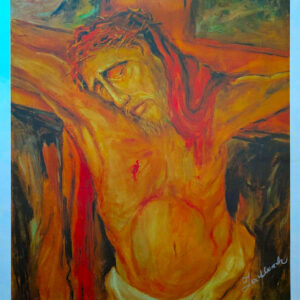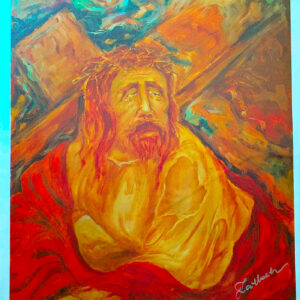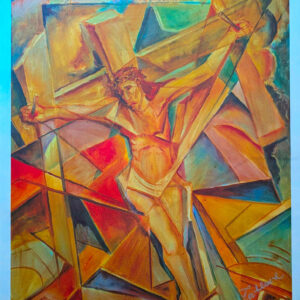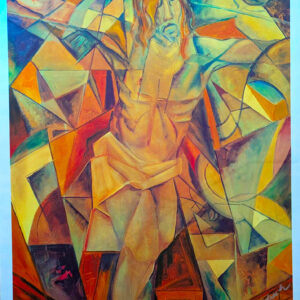Zablach
Hector Zablach, a Chilean painter born in Santiago in 1934, is recognized for his unique artistic journey that blends South American heritage with European influences. His artistic formation began at the Academia de Bellas Artes in Buenos Aires, Argentina, where he matured his expressive style. Zablach’s work reflects the vibrant colors and deep spirituality of Latin America while incorporating European avant-garde techniques like Cubism and Abstract Expressionism.
Forced by political challenges in Chile, Zablach moved to Brazil in 1954, where he taught painting and sculpture at the Cultural Center of Bangù. During this period, his art gained recognition, and he exhibited widely across Latin America, including venues in Argentina, Venezuela, and Ecuador. His works from this era, such as La raccolta and Canavial, showcase his dedication to capturing the essence of Latin American culture, employing vivid colors and simplified forms that echo popular religiosity and folklore.
In 1973, Zablach relocated to Europe, settling in Italy, where he became a bridge between European art and South American expression. Participating in exhibitions like the Contemporary Art Show in Asiago, he interacted with prominent artists such as Baj, Cassinari, Guttuso, and Picasso, creating a synthesis that enriched his style. His works, such as Cristo in Croce and Il Massacro degli Incas, reveal an evolution toward a lyrical synthesis of his heritage and contemporary influences.
His personal exhibitions have spanned the globe, including notable cities like Buenos Aires, Quito, Caracas, Paris, and Rome, while his paintings have been featured in renowned galleries. Zablach’s oeuvre continues to explore themes of human suffering, resilience, and the universal connection between cultures. His works are distinguished by their warm, passionate color palettes and the emotional depth that transcends cultural boundaries.
Showing all 4 results




